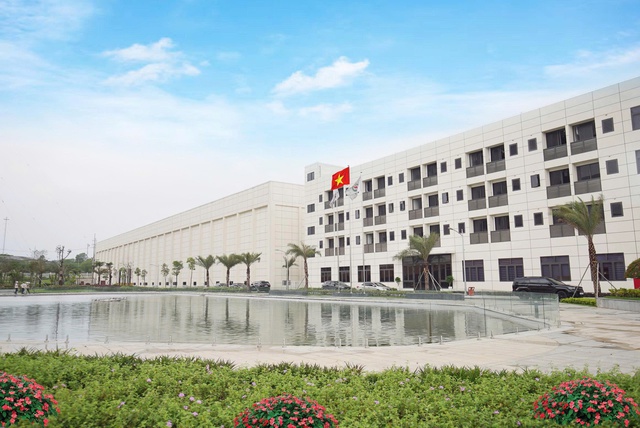Capital to end household waste landfilling with modern treatment technologies
VGP - The local authorities of Ha Noi targets to completely terminate the landfilling of household waste, replacing it with advanced waste treatment technologies in a bid to relieve mounting pressure on the environment, infrastructure, and residents’ quality of life.

Seraphin waste-to-energy plant
Vice Chairman of the Ha Noi People's Committee Nguyen Trong Dong reported that the capital generates around 7,600 tons of household waste each day, most of which has traditionally been buried in landfills. This outdated method poses significant risks of soil, water, and air pollution.
Seraphin waste-to-energy plant inaugurated
A major milestone in this transition came on September 19, when the Hanoi People's Committee and AMACCAO Group inaugurated the Seraphin Waste-to-Energy Plant at the Xuan Son solid waste treatment complex in Tung Thien ward.
Construction of the VND 5,000 billion (approximately USD 196 million) facility began in March 2022. It started receiving waste in May and entered commercial power generation in July this year.
Using German Martin incineration technology, the plant can process 2,250 tons of waste per day and generate 37 MW of electricity—equivalent to handling about one-third of Ha Noi's daily household waste. The system reduces landfill disposal by up to 98 percent.
Beyond energy generation, by-products are recycled for economic and social benefit: electricity is supplied to the national grid, while ash is reused in precast concrete and non-fired bricks.
Starting in 2026, the plant plans to host free educational tours for residents and students to raise awareness about modern waste treatment and environmental protection.
Expanding waste-to-energy model
The Seraphin facility joins the Soc Son Waste-to-Energy Plant, which currently processes 4,000 to 5,000 tons of waste daily, generating 90 MW of electricity. Together, these projects are expected to sharply reduce reliance on landfills.
Looking ahead, Ha Noi intends not only to end landfilling of new household waste but also to excavate old buried waste for treatment, transforming existing landfill sites into public parks.
On June 27, the municipal People's Council approved plans for another waste-to-energy plant in Nam Son, Soc Son district, which will treat daily waste, legacy waste, and sludge while helping restore the local environment. The project includes the construction of a waste-to-energy plant with a treatment capacity of 2,400 tons per day. Of this, 2,250 tons will be household waste, and 150 tons will be dried sludge. The installed power generation capacity is expected to be approximately 60 megawatts. The project also includes a sludge drying system with a capacity of 600 tons per day. After drying, about 150 tons of sludge with a moisture content of 40 percent will be co-incinerated with solid waste.
Waste-to-energy plants are just one component of a broader waste management overhaul. Ha Noi is also promoting waste separation at source, building an integrated collection and treatment system, and advancing recycling and reuse initiatives.
"The inauguration of the Seraphin Plant is only the beginning," Vice Chairman Nguyen Trong Dong said. "It reflects our determination to end household waste landfilling and transition fully to modern, sustainable treatment methods"./.

